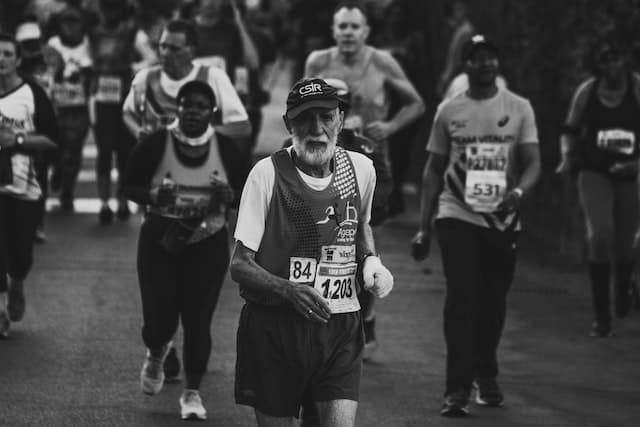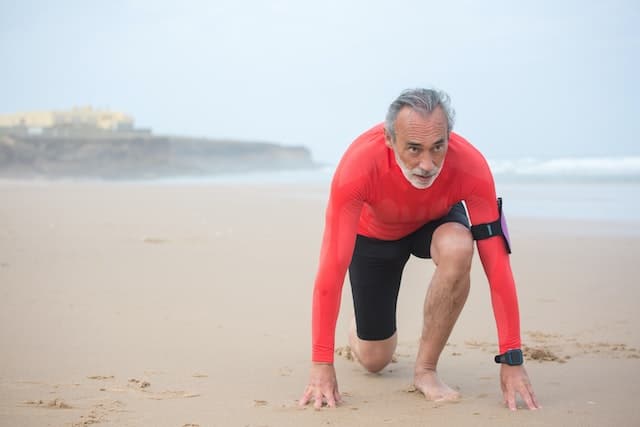
Contents
From running shoes to mental health, there are always methods to start running at 60
People often think about a tree’s life cycle as being linear, isolated and finite. You think about its first time sporting beyond the soil to its eventual rotting and felling to the first canvas.
(Bear with me…)
What people don’t think about is how that tree’s life cycle feeds into its surroundings. The tree helps other areas grow, aids the flourishing of different organisms and acts as one vital part of a living biome.
My analogy?
Just because you may have lost something doesn’t mean you’re not growing in other areas; a 60-year-old runner may have lost certain strengths, but if anything, their will may have grown stronger because of it.
So, if you’re one of those 60-year-old runners who’s looking to postpone that aging process, maintain muscle mass, boost running form, running performance, train for a half marathon, improve physical health or hey, even begin weight training… well, let’s see how you could flourish as a runner, today.
The basics
There’s no age limit when it comes to running, but that doesn’t mean there aren’t limiting factors. Senior runners will have to take a little extra care when it comes to aspects of running. Take care to consider blood pressure before beginning any new regime, and monitor your statistics carefully, all the way to completing those half marathons…
1) Running schedule
Your schedule should, first and foremost, encompass a sensible mileage and activity range. If you’re running too much, you’re at risk of injury. If you try to cross-train a little too hard, then, again, injuries may surface. If you want running success at 60, then you might just have to take it a little slower than you have done.
2) Terrain
The landscape upon which you run will be a huge factor in risk-free training. Bumpy roads, tough terrain or rocky surfaces should be ignored – you don’t need to add extra challenge to challenge yourself as a runner. Your health benefits may be thwarted if you add risk. From ankle pain to joint pain, knee pain to muscle pain, you’ll want to consider your body’s ability to sustain and heal certain injuries.
3) Warming up
More important than ever, flexing your muscles and warming up your joints are essential. Hill training, flat running, light jogging – it doesn’t matter what you’re engaged in, you need to be careful. Older runners are far more likely to suffer from stiffness and joint pain. While age is just a number your body isn’t so. To avoid physical therapy try to warm up in all the best ways you can.


Conclusion
Other runners don’t know what it’s like. You need to train harder but be more careful, warm up more but try not to fatigue yourself too quickly, and avoid certain routes entirely. Thankfully like most things in our lives, there’s always a fix. Make sure to stay true to that fix and avoid causing even more problems.
FAQs
How much is a physical therapist?
They can range from £50 p/h to £300. It depends on the person and the treatment.